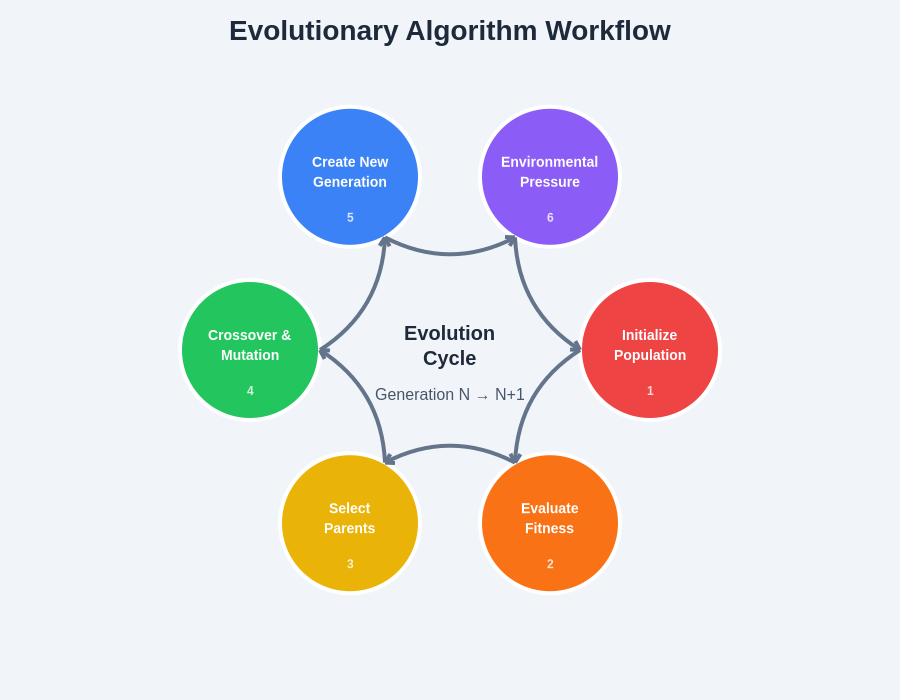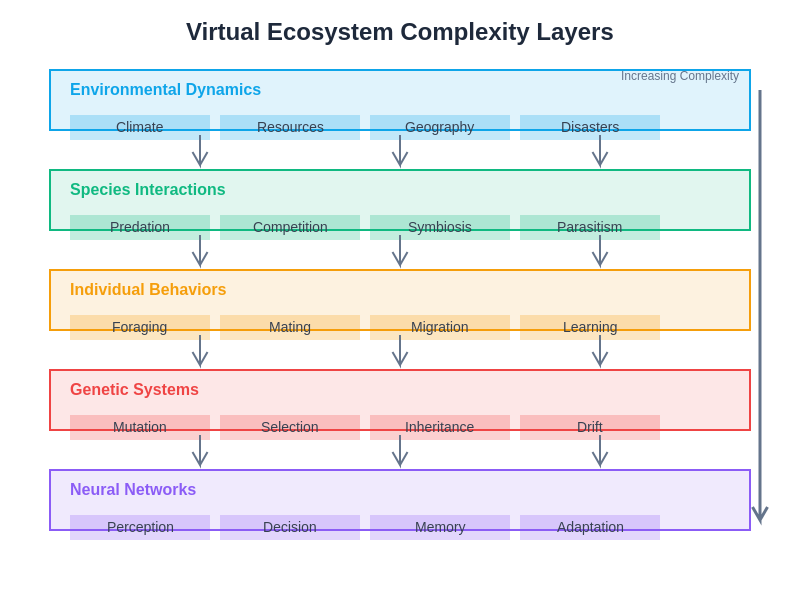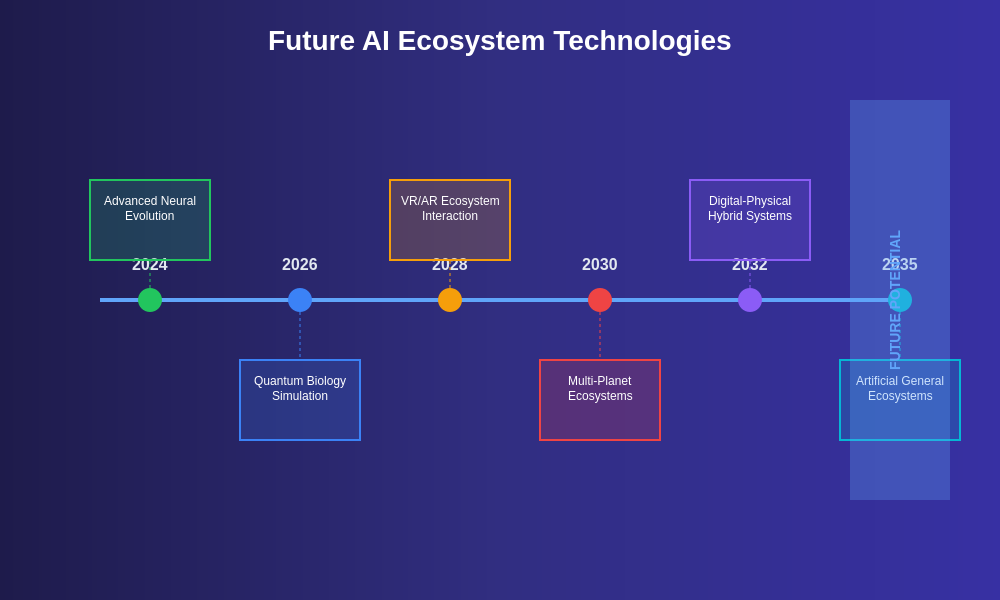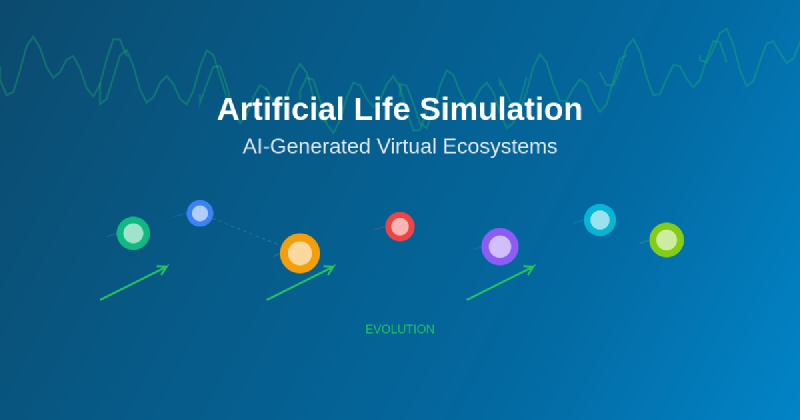The intersection of artificial intelligence and life simulation has given birth to one of the most fascinating frontiers in computational science, where digital organisms evolve, adapt, and interact within meticulously crafted virtual environments. These AI-generated virtual ecosystems represent a revolutionary approach to understanding the fundamental principles of life, evolution, and complex adaptive systems through the lens of computational modeling and machine learning algorithms.
Explore the latest AI simulation trends to witness the cutting-edge developments in artificial life research and virtual ecosystem modeling. The creation of these digital worlds transcends mere academic curiosity, offering profound insights into biological processes, ecological dynamics, and the emergence of complex behaviors from simple rules and interactions.
The Genesis of Digital Life
The conceptual foundation of artificial life simulation traces its origins to the pioneering work of computational biologists and computer scientists who recognized the potential of digital environments to replicate and study the fundamental processes that govern living systems. These virtual ecosystems operate on sophisticated algorithms that simulate the core mechanisms of natural selection, genetic variation, environmental pressures, and species interactions within carefully controlled digital parameters.
The development of AI-generated virtual ecosystems represents a significant evolutionary leap from traditional rule-based simulations, incorporating machine learning techniques that allow for adaptive behavior, emergent properties, and spontaneous complexity that mirrors the unpredictable nature of real biological systems. These advanced simulations utilize neural networks, genetic algorithms, and reinforcement learning to create autonomous agents capable of learning, evolving, and developing survival strategies without explicit programming for specific behaviors.
The computational power required to sustain these complex virtual worlds has grown exponentially, leveraging parallel processing, cloud computing resources, and specialized hardware accelerators to simulate millions of individual organisms across multiple generations within reasonable timeframes. This technological advancement has enabled researchers to observe evolutionary processes that would take millennia in nature within compressed digital timescales, providing unprecedented opportunities to study adaptation, speciation, and ecological dynamics.
Evolutionary Algorithms and Digital Darwin
The implementation of evolutionary algorithms within artificial life simulations creates a digital manifestation of Darwinian principles, where virtual organisms undergo mutation, selection, and reproduction based on their fitness within their simulated environment. These algorithms encode genetic information in digital DNA structures that can be modified, combined, and passed to offspring generations, enabling the emergence of increasingly sophisticated survival strategies and behavioral patterns over time.
Enhance your AI research with Claude to explore complex evolutionary modeling and advanced simulation techniques that push the boundaries of artificial life research. The integration of machine learning with evolutionary computation creates hybrid systems where organisms can adapt not only through genetic evolution but also through learned behaviors that can influence their survival and reproductive success within the virtual ecosystem.
The genetic representation systems used in these simulations have evolved from simple binary strings to complex hierarchical structures that can encode morphology, behavior, neural network architectures, and physiological parameters. This multidimensional genetic encoding enables the evolution of diverse traits simultaneously, leading to the emergence of specialized niches, predator-prey relationships, and symbiotic interactions that reflect the complexity observed in natural ecosystems.

The iterative process of mutation, selection, and reproduction creates a continuous cycle of innovation and optimization within the virtual environment. Random genetic variations introduce novel traits and behaviors, while environmental pressures and inter-organism competition determine which variations prove advantageous for survival and reproduction, gradually shaping the characteristics of the digital population over successive generations.
Emergent Behaviors in Virtual Worlds
One of the most remarkable aspects of AI-generated virtual ecosystems lies in their capacity to produce emergent behaviors that were not explicitly programmed into the simulation. These spontaneous phenomena arise from the complex interactions between individual organisms, their environment, and the evolutionary pressures acting upon the population, creating behavioral patterns and social structures that mirror those observed in natural biological systems.
The emergence of cooperative behaviors, territorial disputes, mating rituals, and communication systems within virtual populations demonstrates the power of bottom-up design principles, where complex macro-level phenomena emerge from simple micro-level rules and interactions. These emergent properties often surprise researchers with their sophistication and biological plausibility, suggesting fundamental principles that govern the organization of living systems regardless of their physical or digital nature.
Collective intelligence phenomena, such as swarm behavior, flocking patterns, and distributed problem-solving capabilities, frequently manifest within virtual ecosystems as individual organisms develop strategies for coordinating their actions to achieve common goals. These collaborative behaviors often evolve without explicit programming for cooperation, emerging naturally from the competitive pressures and environmental challenges that favor group coordination over individual action.
The study of emergent behaviors in virtual ecosystems has contributed significantly to our understanding of consciousness, intelligence, and the conditions necessary for the development of complex cognitive abilities. Some simulations have produced organisms capable of learning, memory formation, and even primitive forms of cultural transmission, where beneficial behaviors are passed between individuals through observation and imitation rather than genetic inheritance.
Neural Network Evolution and Adaptive Intelligence
The integration of neural networks into artificial life simulations has revolutionized the cognitive capabilities of virtual organisms, enabling the evolution of increasingly sophisticated decision-making processes and adaptive behaviors. These evolved neural architectures often display remarkable efficiency and specialization, developing unique solutions to environmental challenges that reflect the specific pressures and opportunities present within their digital habitat.
Discover advanced AI capabilities with Perplexity for comprehensive research into neural evolution and adaptive intelligence systems that drive the development of sophisticated virtual organisms. The evolutionary optimization of neural network structures and parameters through genetic algorithms produces brain architectures that are specifically adapted to their environment and behavioral requirements, often exhibiting superior performance compared to traditionally designed networks for specific tasks.
The co-evolution of neural architecture and behavior creates feedback loops where cognitive capabilities enable new behavioral strategies, which in turn create selective pressures for enhanced cognitive abilities. This dynamic relationship between brain and behavior drives the development of increasingly sophisticated mental faculties, including memory systems, pattern recognition capabilities, and predictive modeling abilities that enhance survival and reproductive success.
Neuroevolution experiments have produced virtual organisms capable of complex navigation, prey tracking, predator avoidance, and social interaction behaviors that emerge from the optimization of neural network parameters through evolutionary processes. These evolved brains often display modular organization, specialized processing regions, and hierarchical information processing structures that parallel the organization observed in biological nervous systems.
Environmental Complexity and Ecological Dynamics
The sophistication of AI-generated virtual ecosystems extends beyond individual organism behavior to encompass complex environmental dynamics that influence the evolutionary trajectory of entire populations. These digital environments incorporate realistic physical properties, resource distributions, climate variations, and natural disasters that create selective pressures and opportunities for adaptation that mirror those found in natural ecosystems.
The implementation of realistic ecological relationships, including predator-prey dynamics, competition for resources, symbiotic partnerships, and parasitic interactions, creates a web of interdependencies that drives the evolution of diverse survival strategies and ecological niches. These complex relationships often lead to the emergence of stable ecological communities with balanced population dynamics and specialized roles for different organism types.
Environmental variability and unpredictability serve as crucial drivers of evolutionary innovation, preventing populations from becoming overly specialized for static conditions and encouraging the development of adaptive flexibility and resilience. Seasonal changes, resource fluctuations, and periodic environmental disturbances create opportunities for new evolutionary experiments and the exploration of alternative survival strategies.
The incorporation of spatial structure and geographic barriers within virtual environments enables the study of speciation processes, population genetics, and biogeographic patterns that reflect the influence of landscape features on evolutionary outcomes. Island biogeography experiments, range expansions, and habitat fragmentation scenarios provide insights into the factors that promote or inhibit evolutionary diversification and adaptive radiation.

The multi-scale nature of environmental influences, from local microhabitat conditions to global climate patterns, creates a hierarchy of selective pressures that shape evolutionary outcomes at different temporal and spatial scales. This complexity enables the study of macro-evolutionary processes, including adaptive radiation, mass extinction events, and long-term evolutionary trends that are difficult to observe or experiment with in natural systems.
Genetic Algorithms and Population Dynamics
The implementation of sophisticated genetic algorithms within artificial life simulations enables the modeling of complex population genetic processes that drive evolutionary change and maintain genetic diversity within virtual populations. These algorithms incorporate realistic models of inheritance, genetic recombination, mutation rates, and population structure that influence the distribution and frequency of genetic variants within the simulated ecosystem.
Population size dynamics, migration patterns, and demographic fluctuations play crucial roles in determining the evolutionary potential and genetic stability of virtual populations. Small population sizes can lead to genetic drift and the loss of beneficial variants, while large populations maintain greater genetic diversity and evolutionary flexibility, reflecting the principles of population genetics observed in natural systems.
The modeling of sexual reproduction, mate selection, and reproductive strategies within virtual ecosystems introduces additional complexity to the evolutionary process, enabling the study of sexual selection, reproductive isolation, and the evolution of mating preferences that contribute to speciation and adaptive divergence. These reproductive mechanisms often evolve sophisticated strategies for maximizing reproductive success while minimizing the costs associated with mate acquisition and offspring care.
Genetic linkage, epistatic interactions, and pleiotropy are incorporated into advanced genetic algorithms to model the complex relationships between genotype and phenotype that influence evolutionary outcomes. These genetic architectures enable the study of correlated trait evolution, developmental constraints, and the role of genetic architecture in determining evolutionary trajectories and adaptive potential.
Machine Learning Integration and Adaptive Systems
The fusion of machine learning techniques with traditional evolutionary algorithms has created hybrid systems that combine the exploratory power of evolutionary search with the efficiency of gradient-based optimization and supervised learning. These integrated approaches enable virtual organisms to adapt through multiple mechanisms simultaneously, including genetic evolution, individual learning, and cultural transmission of beneficial behaviors.
Reinforcement learning algorithms embedded within virtual organisms allow for the acquisition of complex behaviors through interaction with their environment, enabling rapid adaptation to changing conditions and the development of sophisticated strategies that complement genetically encoded behaviors. This combination of evolutionary and learning-based adaptation creates organisms capable of both short-term behavioral flexibility and long-term evolutionary optimization.
Deep learning architectures have been successfully integrated into artificial life simulations, enabling the evolution of complex neural networks capable of processing high-dimensional sensory information and generating sophisticated motor responses. These evolved deep networks often display emergent properties such as attention mechanisms, memory systems, and hierarchical feature representations that enhance their ability to navigate and survive within complex virtual environments.
The application of unsupervised learning techniques within virtual ecosystems enables organisms to discover hidden patterns and structures within their environment without explicit supervision, leading to the development of internal world models and predictive capabilities that enhance their decision-making abilities. These learned representations often reveal environmental features and relationships that are not immediately apparent but prove crucial for survival and reproductive success.
Computational Frameworks and Implementation Challenges
The development of AI-generated virtual ecosystems requires sophisticated computational frameworks capable of handling the massive parallelization demands of simulating thousands or millions of individual organisms simultaneously while maintaining realistic ecological interactions and environmental dynamics. These frameworks must balance computational efficiency with biological realism to create meaningful simulations within reasonable timeframes and resource constraints.
Modern artificial life simulation platforms leverage distributed computing architectures, GPU acceleration, and cloud-based resources to achieve the computational scale necessary for complex ecosystem modeling. The optimization of simulation algorithms for parallel execution and efficient memory utilization enables researchers to explore larger population sizes, longer evolutionary timescales, and more complex environmental conditions than previously possible.
The challenge of parameter selection and model validation in artificial life simulations requires careful consideration of the trade-offs between computational tractability and biological realism. Researchers must identify the essential features of natural systems that must be preserved while simplifying or abstracting less critical aspects to maintain computational feasibility without compromising the validity of evolutionary insights.
Data storage and analysis present significant challenges in long-term artificial life experiments, where the accumulation of genetic, behavioral, and environmental data over thousands of generations can reach petabyte scales. Advanced data compression techniques, selective sampling strategies, and real-time analysis capabilities are essential for managing and extracting meaningful insights from these massive datasets.
Applications in Scientific Research and Education
Virtual ecosystems serve as powerful research tools for investigating fundamental questions in evolutionary biology, ecology, and complex systems science that are difficult or impossible to address through traditional experimental approaches. These simulations enable controlled experimentation with evolutionary processes, hypothesis testing under precisely defined conditions, and the exploration of alternative evolutionary scenarios that provide insights into the mechanisms underlying biological diversity and adaptation.
The educational applications of artificial life simulations provide students and researchers with interactive laboratories for exploring evolutionary principles, ecological relationships, and complex systems dynamics through hands-on experimentation and observation. These virtual environments make abstract concepts tangible and observable, enabling learners to witness evolutionary processes unfold and manipulate parameters to understand their effects on system behavior.
Conservation biology and ecosystem management benefit from artificial life simulations that model the effects of habitat fragmentation, climate change, invasive species, and management interventions on population viability and ecosystem stability. These predictive models help inform conservation strategies and policy decisions by providing quantitative assessments of intervention effectiveness and long-term outcome projections.
The pharmaceutical and biotechnology industries utilize artificial life simulations to model molecular evolution, drug resistance development, and the optimization of biological processes for industrial applications. These simulations accelerate the discovery and development of new therapeutic approaches by exploring vast parameter spaces and identifying promising candidates for further experimental validation.
Future Directions and Technological Frontiers
The future development of AI-generated virtual ecosystems promises even greater sophistication and biological realism through advances in computational power, algorithmic innovation, and our understanding of natural systems. Quantum computing technologies may eventually enable the simulation of quantum biological processes and molecular-level interactions that are currently beyond the reach of classical computational approaches.
The integration of virtual and augmented reality technologies with artificial life simulations creates immersive environments where researchers and students can directly interact with virtual organisms and observe evolutionary processes from within the simulated ecosystem. These immersive experiences enhance understanding and engagement while providing new opportunities for collaborative research and educational activities.

Artificial intelligence advances in natural language processing and computer vision may enable virtual organisms to develop sophisticated communication systems and visual processing capabilities that approach or exceed human-level performance in specific domains. These developments could lead to the emergence of digital cultures, art forms, and knowledge systems created entirely by artificial beings within virtual environments.
The potential for artificial life simulations to contribute to astrobiology research and the search for extraterrestrial life lies in their ability to explore alternative biochemistries, evolutionary pathways, and environmental conditions that may exist on other worlds. These simulations could help identify biosignatures and life detection strategies for missions to potentially habitable exoplanets and solar system bodies.
The convergence of artificial life simulation with robotics and autonomous systems creates opportunities for the evolution of control strategies, morphologies, and behaviors in physical robots through virtual prototyping and optimization. This approach could accelerate the development of adaptive robotic systems capable of operating in complex and unpredictable environments with minimal human intervention.
The continued evolution of artificial life simulation represents a frontier where technology, biology, and philosophy converge to explore fundamental questions about the nature of life, intelligence, and complexity. These virtual ecosystems serve as both scientific instruments and philosophical laboratories, enabling us to better understand our own origins while imagining the possibilities for life and intelligence in digital realms that may one day rival or surpass the complexity of the natural world from which they emerged.
Disclaimer
This article is for informational purposes only and does not constitute professional scientific or technical advice. The views expressed are based on current understanding of artificial life simulation technologies and their applications in research and education. Readers should conduct their own research and consult with qualified experts when implementing or studying artificial life systems. The effectiveness and accuracy of simulation results may vary depending on specific implementation details, computational resources, and modeling assumptions.
